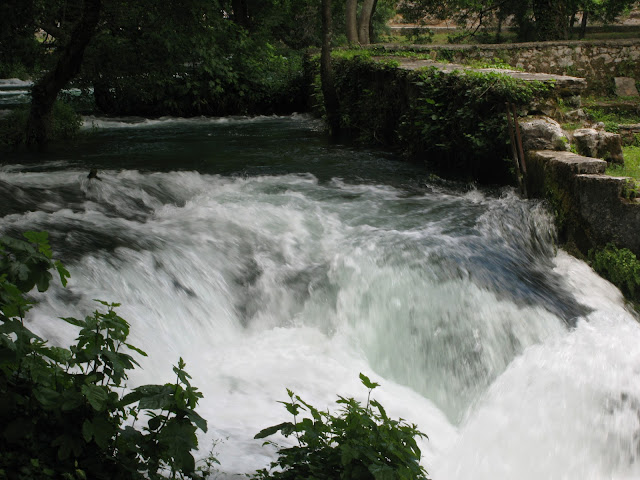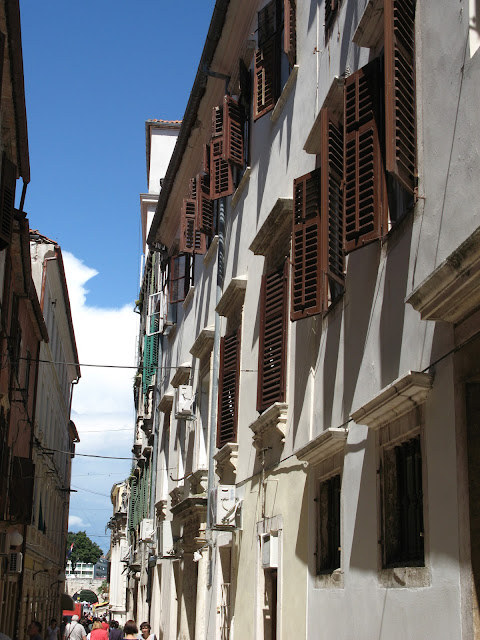My trip to Croatia – Northern Dalmatia…
the land of wine, olive oil and
concrete. ;-)
If you’re looking for beautiful
old-cities, good food, delicious ice-cream and Mediterranean feel without going
to Italy, Dalmatia is definitely your choice. But avoid the July-August season
– too many people for my taste.
Dalmatia is a land that risen up
quickly after the Homeland War in Croatia, there are very little remaining of
it and ruins. But sometimes, if you look hard enough, you may see a forgotten
house with bullet-holes, covered with lush Mediterranean vegetation.
Dalmatia is a land of olive trees,
vines and vineyards and wildly growing figs. It’s a strange land where
mountains meet the sea. And so are the people here - solid as a rock, patience
perfectionists but with a generous flow and the unpredictable ways of the sea.
The more south you go the more “southern” is the peoples character. ;-)
We started our visit to Croatia in
Trogir - the historic city on the Unesco heritage list. Here we had the
pre-taste of what lied ahead. And also here we ate the best “dinner out” in
Croatia. And the most expensive. ;-)
Next day – the historic city of
Sibenik. With tangle of little streets and tones of stairs. The old city was
established on a steep hill in middle ages, in times when having a wagon was a
luxury. They didn’t need wide streets really. ;-) I liked Sibenik for one more
reason – they have a St. Jacob cathedral. ;-)
Split – the city of Diocletian. The city grew directly on the ruins of his palace. The emperor was born only 20 km from Split in Salona (the site of the biggest excavations in this part of Europe) so now know why he choose this location for his seat. Unfortunately rain stopped us from seeing the rest of the city. Oh well... Maybe next time.
We also wanted to see some of Croatian natural treseurs. So we went to the Krka River National Park. It’s very well developed. Not what I was expecting. I like to keep thing a little more raw you see. But that’s just me.
I was delighted though about all the
ethnological details and background of the place. Since I’m an anthropologist
it’s super interesting for me (for the rest of my family not so much ;-).
The last city in northern Dalmatia that we decided to go to was Zadar. And it was a bulls eye. The city of Zadar was established by Romans and you can see evidence of that on every step you make in the old-city. And I’m talking not only about the acient remains of Roman buildings. But for example the streets. Designed wide so that two chariots can easily pass each other. The atmosphere of that city is so Italian. There are a lot of little coffee bars with only four or five tables, serving great cappuccino... and practically nothing else.
When you’re in Zadar you have to go
to the quay and see the huge solar clock and the wave-organ. The organ are
powered by the waves of the sea. So you can hear the music loudest when the
waves are big. It’s magical.
Earlier the same morning my brother
and dad went to the fish market “Ribarnica” and bought some fresh shrimps and
sea-fish. It was fantastic to see my father eating shrimps for the first time
in his life and loving the taste. :-)
Our last day in Northern Dalmatia we
decided to spend on the beach. We discovered a small beach just 10 minutes walk
from our apartment. There were only us and perhaps four other people. We’ve
rent some deckchairs and had the loveliest lazy day in the sun and water. Then
a grilled fish, a good book and packing...
The next day we would be in Dubrovnik.
The next day we would be in Dubrovnik.
To be continued... ;-)































Brak komentarzy:
Prześlij komentarz